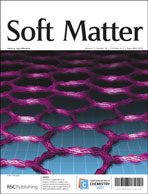A plethora of stimuli-responsive micellar aggregates with a compartmentalized shell can be formed in aqueous solution from ABC triblock terpolymers with tunable hydrophilicity. Polybutadiene-block-poly(tert-butyl methacrylate)-block-poly(2-(dimethylamino)ethyl methacrylate) (PB-b-PtBMA-b-PDMAEMA) and, after modifications by hydrolysis to poly(methacrylic acid) (PMAA) or quaternization to PDMAEMAq, PB-b-PMAA-b-PDMAEMAq terpolymers self-assemble in water, depending on pH and temperature. We demonstrate control over micellar shape, size, and charge via three different preparation pathways. Even more, the micelles are capable of undergoing rearrangements in both the shell and the corona in response to external stimuli like pH or salinity. In that way, different structures such as multicompartment, core–shell–corona or flower-like micelles were identified and characterized viacryogenic transmission electron microscopy (cryo-TEM) and dynamic light scattering (DLS). The presence of two oppositely charged polyelectrolyte blocks within the structures leads to the formation of intramicellar interpolyelectrolyte complexes (im-IPECs) in the shell of the particles. Surprisingly, the im-IPEC formed between PMAA and PDMAEMAq can be redissolved by changes in pH, even in the absence of additional salt.

You have access to this article
 Please wait while we load your content...
Something went wrong. Try again?
Please wait while we load your content...
Something went wrong. Try again?


 Please wait while we load your content...
Please wait while we load your content...